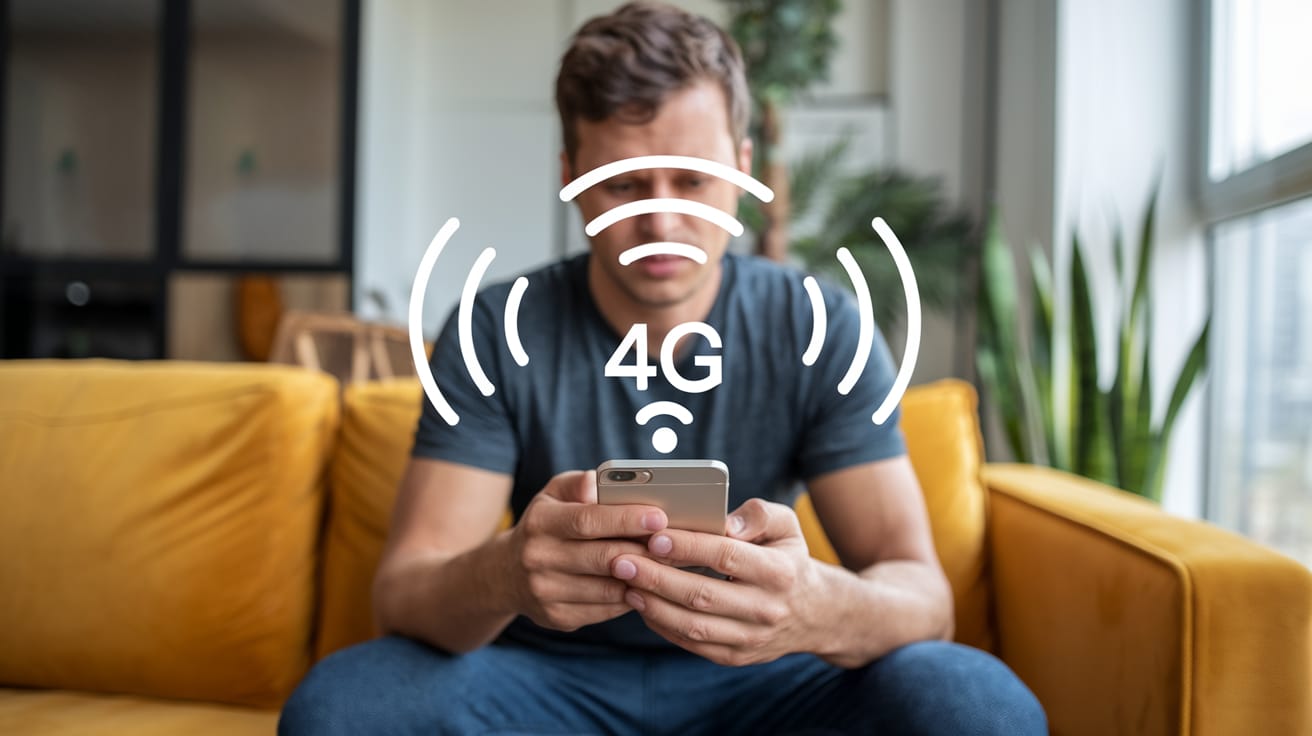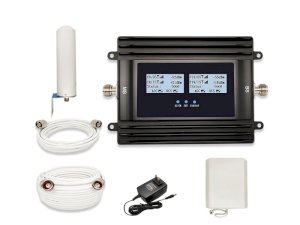
You’ve spent money on a 4G signal booster, expecting to have perfect connections at any time. But, did you know that the quality of your antenna is vital for the overall performance of your signal booster? Our guide looks at the factors that contribute to the performance of your antenna and helps you pick the right tool for faster and more reliable mobile connectivity throughout the UK.
The antenna: your signal booster’s essential partner
Think of your 4G signal booster as a team: the external antenna, the cable, the amplifier, and the internal antenna. Each component contributes to the operability, but the antenna is the crucial “receiver” of the signal from the cell tower. The booster itself can’t create a signal out of nothing—it amplifies the signal it receives. As such, a high-quality antenna is paramount, ensuring the system's overall effectiveness.
Main characteristics that impact antenna performance
There are certain technical specifications that influence how well an antenna performs:
Gain
Gain is used to measure an antenna’s capacity to capture and amplify a signal in dBi (isotropic) or dBd (dipole). A higher gain antenna is able to pick up weaker signals from farther distances. But, excessive gain can amplify noise as well. For many UK homes and offices, a gain of 7-12 dBi for directional antennas or 3-5 dBi for omnidirectional antennas can be a good start.
Frequency range
4G and 5G use different frequency bands in the UK, including 700 MHz, 800 MHz, 1800 MHz, 2600 MHz, and 3.4 GHz. Your antenna must be able to support the frequencies used by your mobile operator—EE, Vodafone, O2, and Three. Multi-band antennas that can handle a broad set of frequency ranges are the most useful. Some 5G networks run the new n77 and n78 bands.
Impedance
In a nutshell, impedance is a measure of opposition to the flow of electrical current. In 4G/5G networks, the typical impedance is 50 Ohms. Correct impedance matching between the antenna, cable, and amplifier is necessary for smooth signal transfer. A mismatch causes signal reflection and reduced performance. It’s like fitting a square peg into a round hole. A poor match can even damage your amplifier over time!
Voltage standing wave ratio (VSWR)
VSWR gauges impedance mismatch. A low VSWR indicates a good match, while a high VSWR means problems. Ideally, VSWR should be below 1.5:1. Higher values mean significant signal loss due to reflections.
Troubleshooting:
- 1.5:1 - 2:1: All right, but has room for improvement.
- 2:1 - 3:1: Noticeable performance degradation. Check cable connections and antenna placement.
- Above 3:1: Severe loss of performance. Examine cable damage, incorrect connectors, or a faulty antenna.
Polarization
Put simply, polarization is the orientation of the electromagnetic waves emitted, and it can be horizontal or vertical. Your antenna and the cell tower’s aerial must have the same polarization for optimal reception. Most 4G/5G antennas in the UK use vertical polarization.
Types of antennas for 4G signal boosters
Understanding the different types of antennas will help you choose the best option for your needs:
Directional antennas like Yagi and Panel
- Characteristics: Focus the signal in a single direction, like a spotlight.
- Advantages: High gain, ideal for distant cell towers or obstructions.
- Disadvantages: Requires accurate pointing; you must know the direction of the cell tower.
- UK examples: Yagi antennas are common, but panel antennas often provide better weather resistance.
Omnidirectional antennas
- Characteristics: Can receive signals from all directions, like a floodlight.
- Advantages: Easy to install; doesn’t require precise pointing.
- Disadvantages: Lower gain than directional antennas; ineffective at long distances or in areas with significant obstructions.
- UK examples: Often a good choice when the cell tower is unknown or there are multiple towers close by.
Dual-polarized antennas
- Characteristics: Capable of receiving signals with both horizontal and vertical polarization.
- Advantages: Improved reception; suitable for handling signals with varying polarization.
Internal antennas
- Characteristics: Small and designed to send the amplified signal inside the building.
- Advantages: Perfect for indoor coverage
- Disadvantages: Not as important to system performance as the external antenna but still important for overall signal quality.
Cable and connectors: the unsung heroes and villains
Don’t overlook the importance of the cable and connectors:
Coaxial cables
Use low-loss coaxial cable for minimal signal attenuation. RG-6 and RG-8 are good for shorter runs, but for longer distances, LMR-400 is the best choice. Signal strength decreases as it travels through the cable, the longer the cable, the greater the loss.
Connectors
Use high-quality, weatherproof connectors and ensure correct installation. Low-cost connectors can lead to significant signal losses.
What’s the right antenna for your 4G amplifier?
To make an educated choice of the antenna, follow these steps:
- Determine the distance to the cell tower, the presence of obstructions, and the desired coverage area.
- Make sure the antenna covers the frequency bands used by your mobile operator in your location.
- Directional for the location of the cell tower that you know, omnidirectional if the tower location is unknown.
- Opt for an antenna with an appropriate gain based on signal strength and obstructions.
- Use the shortest cable length possible and consider LMR-400 or another low-loss coaxial cable.
- Research antenna reviews before you buy the aerial.
- If you’re unsure, consult an expert installer.
Installation and testing: maximising the results
After your selection of the antenna, use these tips for installation and testing:
-
Optimal location: Mount the antenna as high as possible, for example on the roof or pole, to refine the line of sight.
-
Precise aiming: Accurately point a directional antenna towards the cell tower with a compass and signal strength monitoring.
-
Tighten connections: Make sure all cable connections are tight and weather sealed.
-
Test the signal: Check signal strength before and after you’ve installed the antenna to gauge whether or not improvement is needed.
-
Fine-tune direction: Make slight adjustments to the antenna’s direction for the best signal quality.
Conclusion
The quality of your 4G antenna impacts the overall performance of your amplifier. With the knowledge of antenna specs, you can unlock the untapped potential of your aerial and enjoy faster and more reliable 4G connectivity day and night!
FAQs
What gain should I choose for my antenna?
This will depend on your situation. For good signals and sightline, a low-gain antenna might be ample. For weak signals or with obstructions, utilize a higher gain antenna but watch out for amplifying noise. A range of 7-12 dBi for a directional antenna or 3-5dBi for an omnidirectional antenna are reasonable choices.
A directional or omnidirectional antenna is better?
Directional antennas are better for longer distances or if you know the direction of the cell tower. Omnidirectional antennas are simpler to install and are best when you don’t know the location of the cell tower.
How do I test my 4G signal strength?
Utilize a signal strength meter app on your phone, a special tester or indicators in your mobile phone’s settings. Many apps are able to give you a dBm reading.
Can the length of the cable affect my signal?
Yes, the longer the cable, the greater the signal losses. Keep cables as short as possible and use low-loss coaxial cable to reduce signal degradation.
I’m not comfortable working on my roof. What should I do?
If you dislike working at heights, then hire a professional installer to set up and point your antenna in the correct direction.
What kind of connectors can I use?
You’d better utilize high-quality connectors with a good weatherproof seal. They should be securely attached to the cable.
Where do I get 4G antennas and cables?
4G antennas and cables are available in online retailers and specialist electronics stores. Common places in the UK are Amazon, eBay, and specialist mobile signal booster suppliers.








